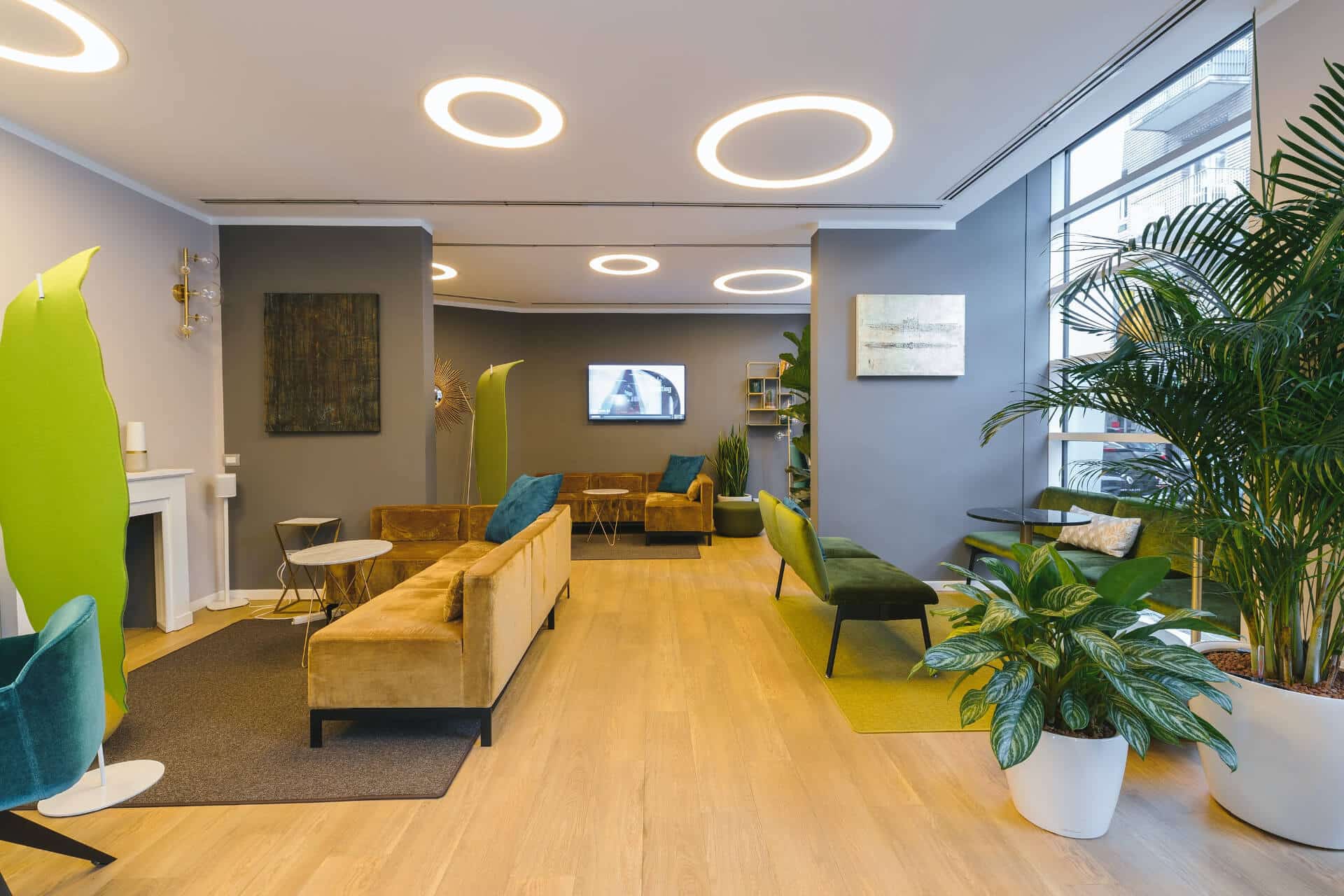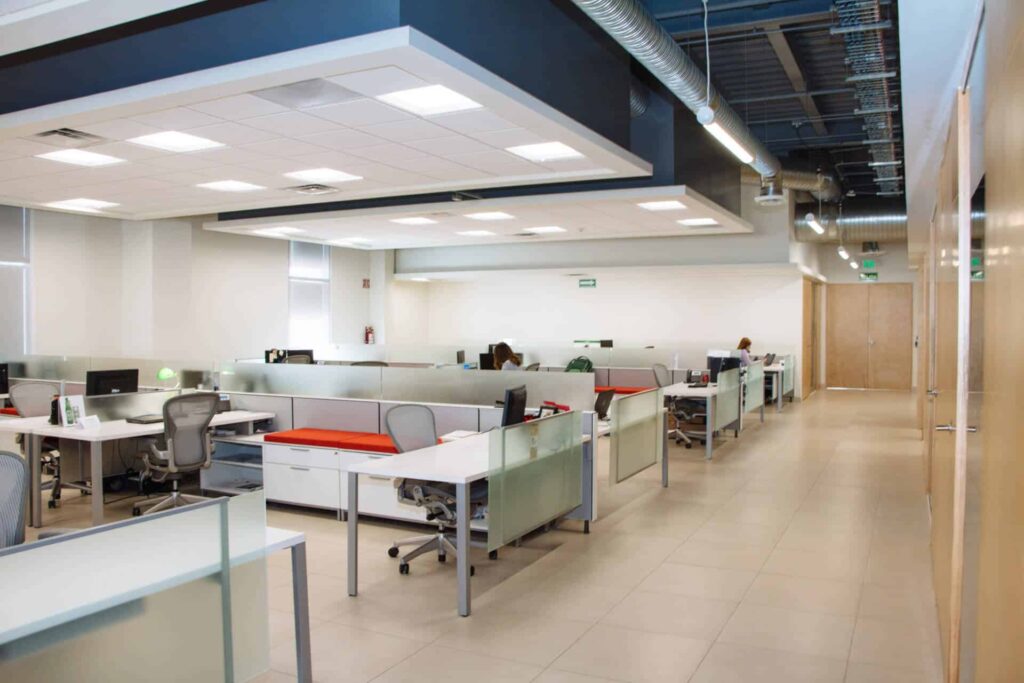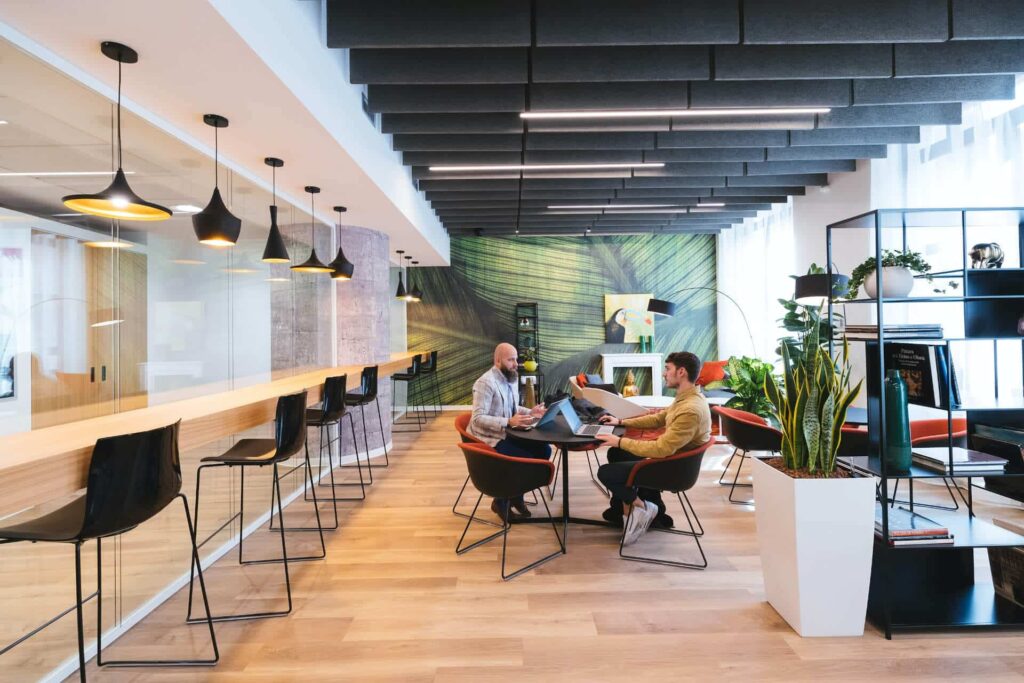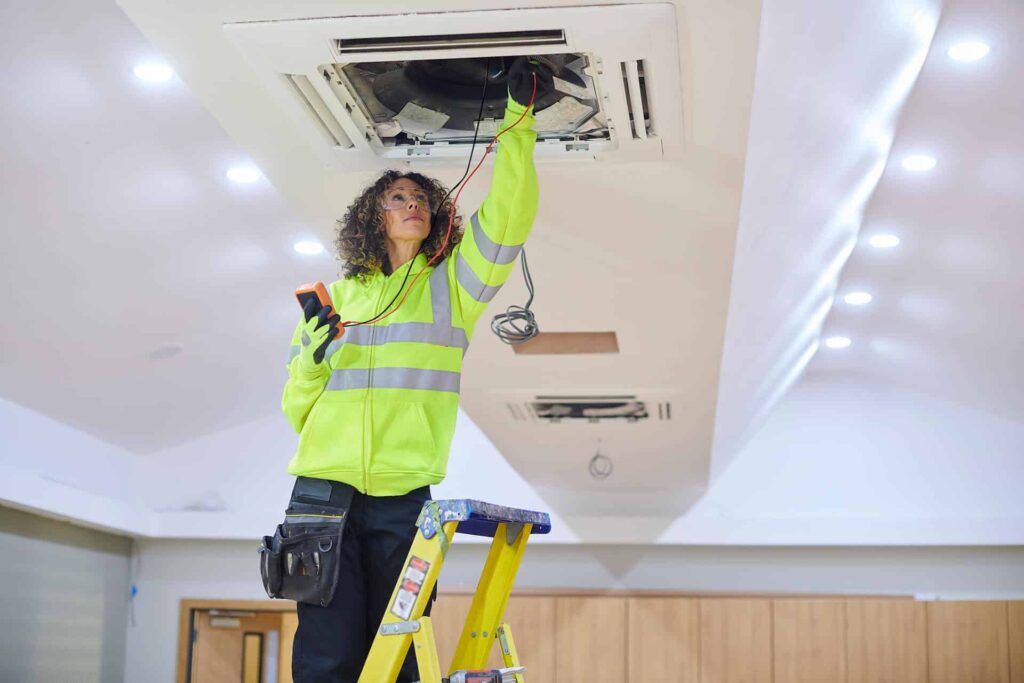6 Work environment types for the modern office

Work environment types all present their unique benefits and challenges for both employees and facility managers (FMs) alike. As the workplace is evolving, there are many different environments companies can embrace to increase flexibility, productivity, and employee experience.
The best work environments are those that meet the demands of all team members head on.
As FMs plan the workplace, they need to think not only about where employees work, but also how and even why. This will become increasingly important as hybrid work becomes more prevalent.
In this article, we will explore six emerging work environment types and the pros and cons of each.
What are the six work environment types?
Before jumping in, it’s important to note that when discussing work environment types, we’re not just talking about things like office furniture or the amount of natural lighting, although of course these details matter.
And we’re not just talking about a company’s culture, like whether an organization is fast-paced or team-based, strict, or collaborative.
When we talk about work environment types, we’re talking about everything that affects employee satisfaction and productivity—i.e.: when, where, and how they work. Ultimately, there are six main types of work: traditional, open, activity-based, agile, neighborhood-based, and those that utilize bookable spaces.
Going forward, companies should also be thinking about how and why employees work. This can help them pick the workplace environment best suited to their needs.

1. Traditional work environments
The traditionalist model is basically your full-time ‘9-to-5,’ in which employees clock in and clock out of a physical office—and the same physical office or cubicle—each day. While there’s no doubt the ‘new normal’ of work will be increasingly hybrid, there are still companies and industries for which conventional work environments make the most sense.
As OfficeSpace CEO David Cocchiara explains in a recent interview on the future of work, we’ll continue to see traditional work environments in financial services and other industries that use an apprenticeship model that is heavily dependent on face-to-face interactions and teamwork.
“You have different models for different reasons,” he says. “When you hear a company like Goldman Sachs say they are planning to go back to how things looked in 2019, there’s a reason for that. And it makes sense for their business.”
While most workers have embraced flexible, remote work, for others it can lead to increased struggles and burnout. These workers may find it easier to maintain a good work-life balance in a traditional work environment.
That’s why workers will need to think critically about which environment will suit their personality type and preferred way of work and adjust their job searches accordingly.
2. Open offices
If traditional work environments are at one end of the spectrum, open offices are at the other, with open floor plans designed to break down silos and boost communication.
There are many industries that can thrive in open office layouts, such as graphic design and the visual arts, and Millenials in particular are drawn to this more artistic environment.
Proponents of this type of work environment point to how it promotes better and faster communication and breaks down barriers between leaders and employees. Meanwhile, detractors point to the increased distractions and lack of privacy it can also create.
Many of the practices described below, such as hot desking and hotelling, can help FMs create an open work environment that addresses these concerns and better meets the needs of all employees.
Following proper open office etiquette can also help.

3. Activity-based working environments
Even when well managed, there will be some workers for whom an open office is just too distracting and disorderly. Enter the activity-based work environment type. ABW is designed to empower employees by giving them the necessary tools and spaces to direct their own working conditions.
Activity-based work (ABW) gives employees the ability to choose a workspace that will best suit their needs. Gone are assigned seats. Instead, organizations create different spaces that employees can use based on the work—ie.: the activity—that they’re completing.
As such, you can still have an open layout for those activities that demand collaboration. But you can also provide quiet spaces for focused work, and private spaces for private work.
As countless activity-based workspace design examples illustrate, many of today’s top organizations are adapting this work environment type to meet their unique needs. We can expect ABW to stay popular well into the future.
As with all work environments, though, the benefits of ABW will only be fully realized if FMs have the necessary tools and data to manage it well and quickly. This will allow this model to live up to its promise of flexibility and improved employee experience.
4. Agile working environment types
There is no one perfect work environment. However, agile working presents a unique approach to optimizing hybrid work model pros and cons.
This is an employee-centered work environment that first asks employees the question: what type of environment and schedule do you need to do your job well? Through answering that question, employees are able to choose when, where and how they work. This essentially creates individualized work environments that let them be their most productive.
This extreme level of flexibility demands equally robust software solutions. This is to ensure FMs are able to accommodate and support everyone on the team, no matter their physical environment or preferred way of work.

5. Office Neighborhoods
By offering a simplified way to visualize seating, office neighborhoods support a variety of working environments.
In this model, FMs can group workers into ‘neighborhoods’ based on categories like job function, work style, activity or task, or even work personality. Splitting your office space into these neighborhoods makes it much easier to implement flexible and hybrid working styles. This is true for both for workers and workplace leaders—creating a work environment that is optimized for everyone.
6. Bookable Spaces
The sixth key work environment type is one that employs bookable spaces. Like the name suggests, this work environment lets employees choose where they work on a day-to-day basis. It can be configured as follows according to your needs and space.
Room booking
Room booking is a tool that lets FMs and employees create an ever-adaptable workspace. And create it depending on the needs of the day. Sometimes employees need conference rooms. Or they need a private office with a phone. Or they need an open space for collaborative work. The reality is that in today’s notoriously fast-paced world, employee needs change constantly.
Companies that utilize this workplace environment will do well to have real time, problem-solving analytics. This can help them understand how employees are actually interacting with their office.
Companies should also ensure that room bookings are quick and easy to adjust.
Desk booking
Similarly, desk booking brings this individualized flexibility down to the desk or cubicle level.
Companies usually offer desk bookings in one of the two following ways:
Hot desking
Hot desking is a work environment type that can cut down on real estate costs, by letting employees share desks and cubicles. In this model, employees take whatever desk is available to them on any given day. Again, this demands practical software that lets everyone on a team track which desks are currently unavailable.
Hoteling
Hot desking contrasts with hoteling, which lets employees reserve their desks ahead of time using office hoteling software.
When used correctly, office hoteling can lead to improved productivity, increased employee engagement and collaboration, cost savings, and more effective use of resources and space management.

What are the best work environment types?
What works best for one employee or organization will not work best for another; as such, there is no one ‘best’ work environment type.
Organizations and hiring managers should therefore be upfront about their work environment in their job offers. Similarly, there will be an onus on employees to seek out work environments that will let them be their happiest and most productive.
OfficesSpace provides the software necessary to create a positive work environment. Contact us for a free demo.
Photos: Copernico, Adolfo Félix, Copernico, Kaleidico, Brooke Cagle




